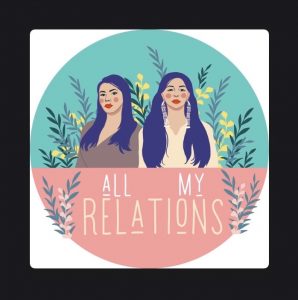When the Covid pandemic began in 2020, I, like many others I am sure, found myself spending more time alone. To deal with the stress of the pandemic, I started going on nature walks and because I went for walks alone, I decided to start listening to podcasts as I walked through trails. Through listening to digital stories, I no longer felt alone. Instead, it felt as though I was listening to people tell me about their experience, their culture, their joy and their pain. I was engaged with the power of digital storytelling.
As I searched for which podcasts to listen to, I really wanted to learn stories about Indigenous people. There were a couple of reasons for this: First, I needed to hear about the experiences of Indigenous people from Indigenous people rather than the stories I have read by non-Indigenous people. Second, I really needed to educate myself on the issues that are important to Indigenous people so I can become more aware and sensitive as a non-Indigenous person. Third, through finding podcasts created and hosted by Indigenous people, I could also bring those digital stories into my English classroom. It is important for me to include diverse texts into my courses to illustrate diverse perspectives, rather than the current western or white-male dominated views we have in the stories available in the book rooms at our school.
When I found the All My Relations podcast through the Apple Podcasts app on my phone, I was intrigued by the name. I have heard this phrase many times and I will be honest that I wasn’t quite sure what it really meant (I have since gotten to understand it to mean that we are all connected). I gave this podcast a click to find out more. A quick read and scroll through the list enticed me to select one of the first podcasts “Native Mascots: Really, Still?” This podcast episode, through academic research, activists and psychologists and the hosts’ own experiences, really focussed on the harms that are caused by the imagery, stereotypes, and racist wording used by sports teams against Indigenous people. It was really disturbing to think that teams, like the Washington Football Team, using racial slurs aligned with a Native mascot would be deemed acceptable to have at all (let alone since 1960 and it not be removed until 2020)! After listening to this podcast, I felt very sheltered and naïve. I needed to increase my awareness, and I really needed to understand more. I clicked on the next episode and then the next.
This podcast is now into its third season, and it is still so powerful and engaging. The hosts, Matika Wilbur, Adrienne Keene, and Desi Small-Rodriguez are such intelligent and passionate Indigenous women who really care about Indigenous issues. They really make this podcast so powerful. They also make sure to bring in knowledgeable experts on the topics they cover and really make sure their voices and perspectives are heard. To give you some ideas on the topics covered, season 1 included topics such as Native appropriation, Indigenous feminism, food sovereignty, sacredness and more. Season 2 really introduced me to various Indigenous artists and activists and the current Season 3 has been diving into topics about love and protecting Indigenous women. I really encourage you to take a listen to this podcast.
Since starting this course, I decided to learn more about the podcast and its creators and hosts, hence adding this to the blog. Check out their website to learn more.
All My Relations Podcast (2019-present). All My Relations [Audio podcast]. https://www.allmyrelationspodcast.com/


